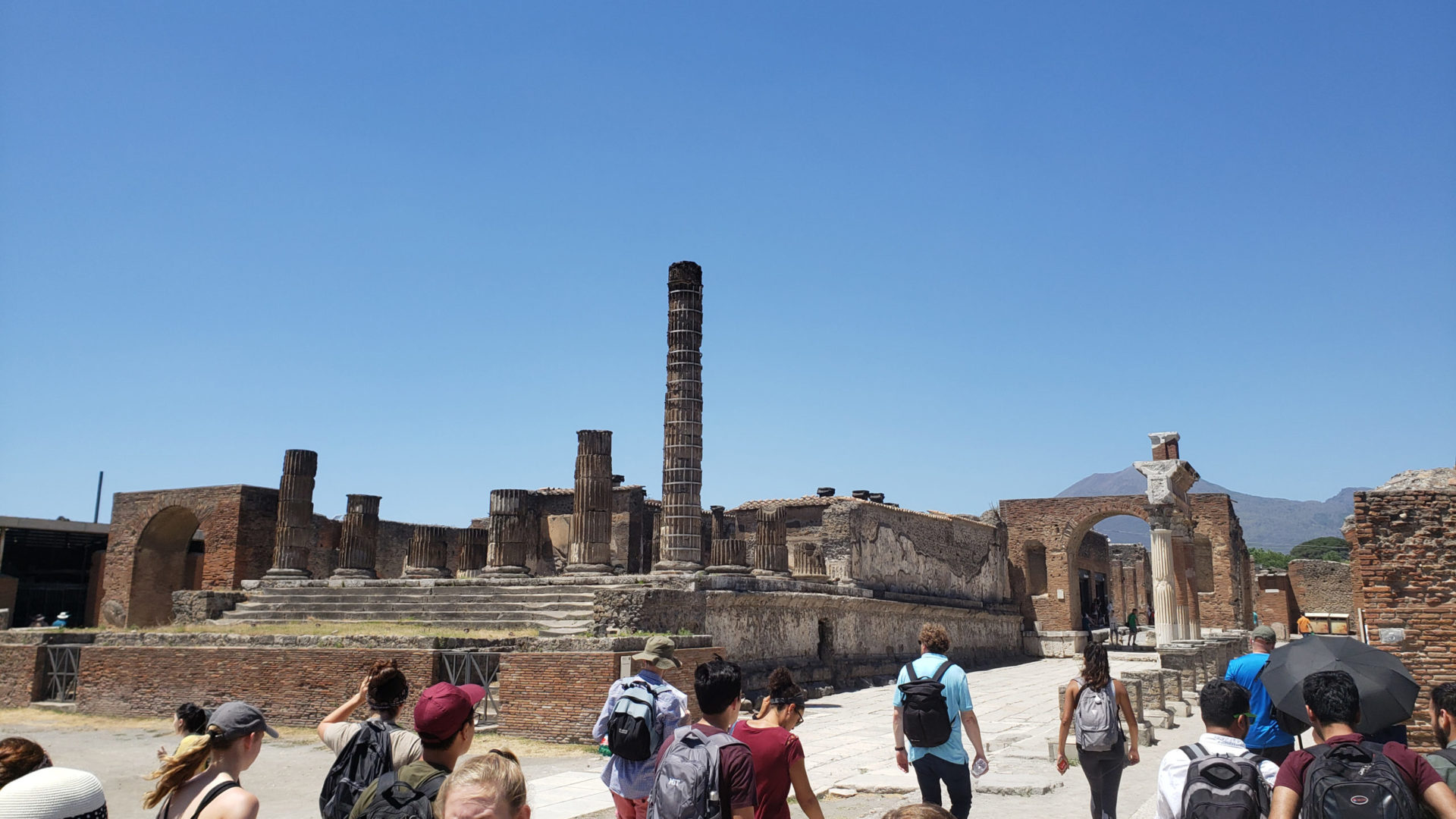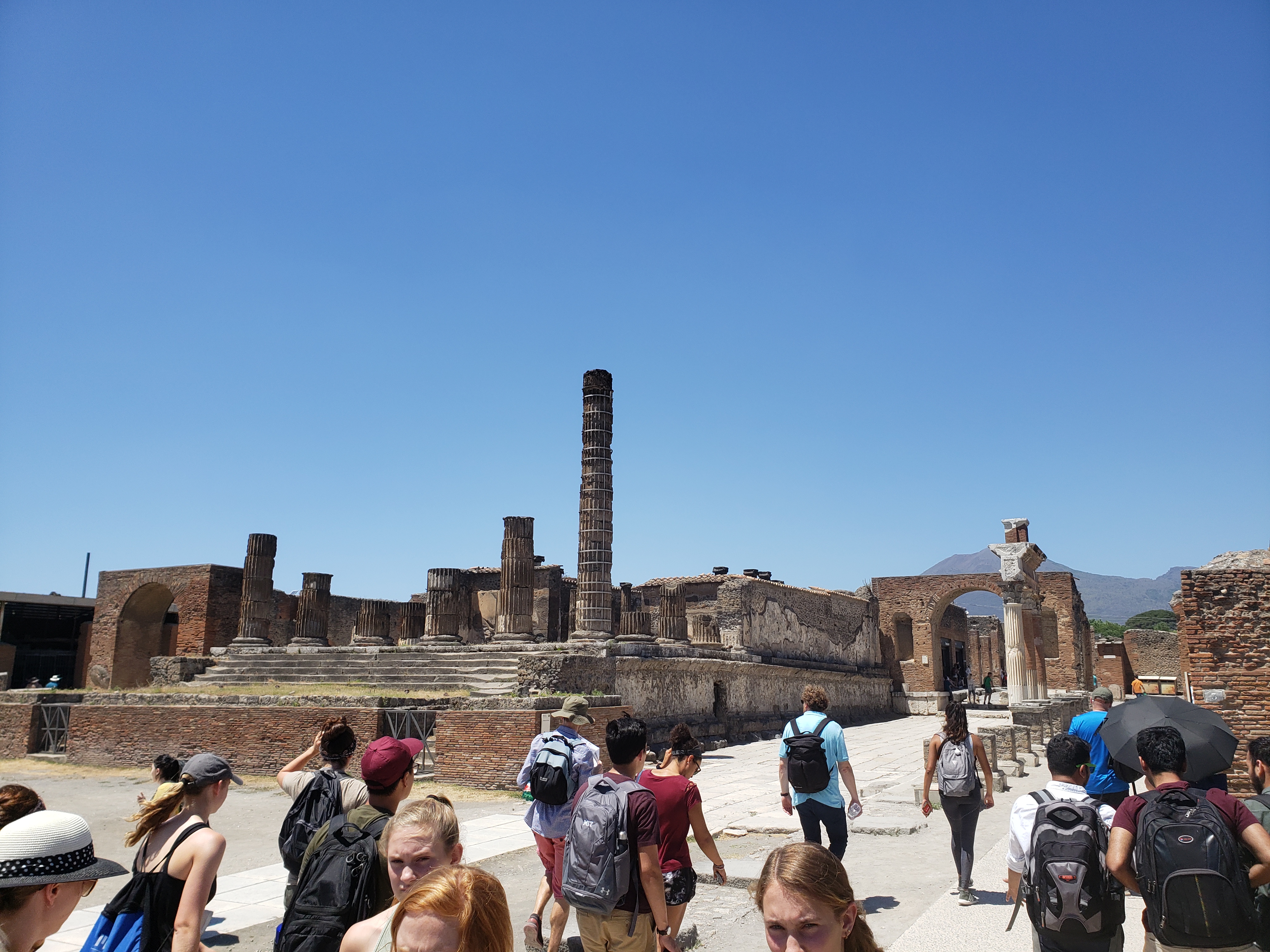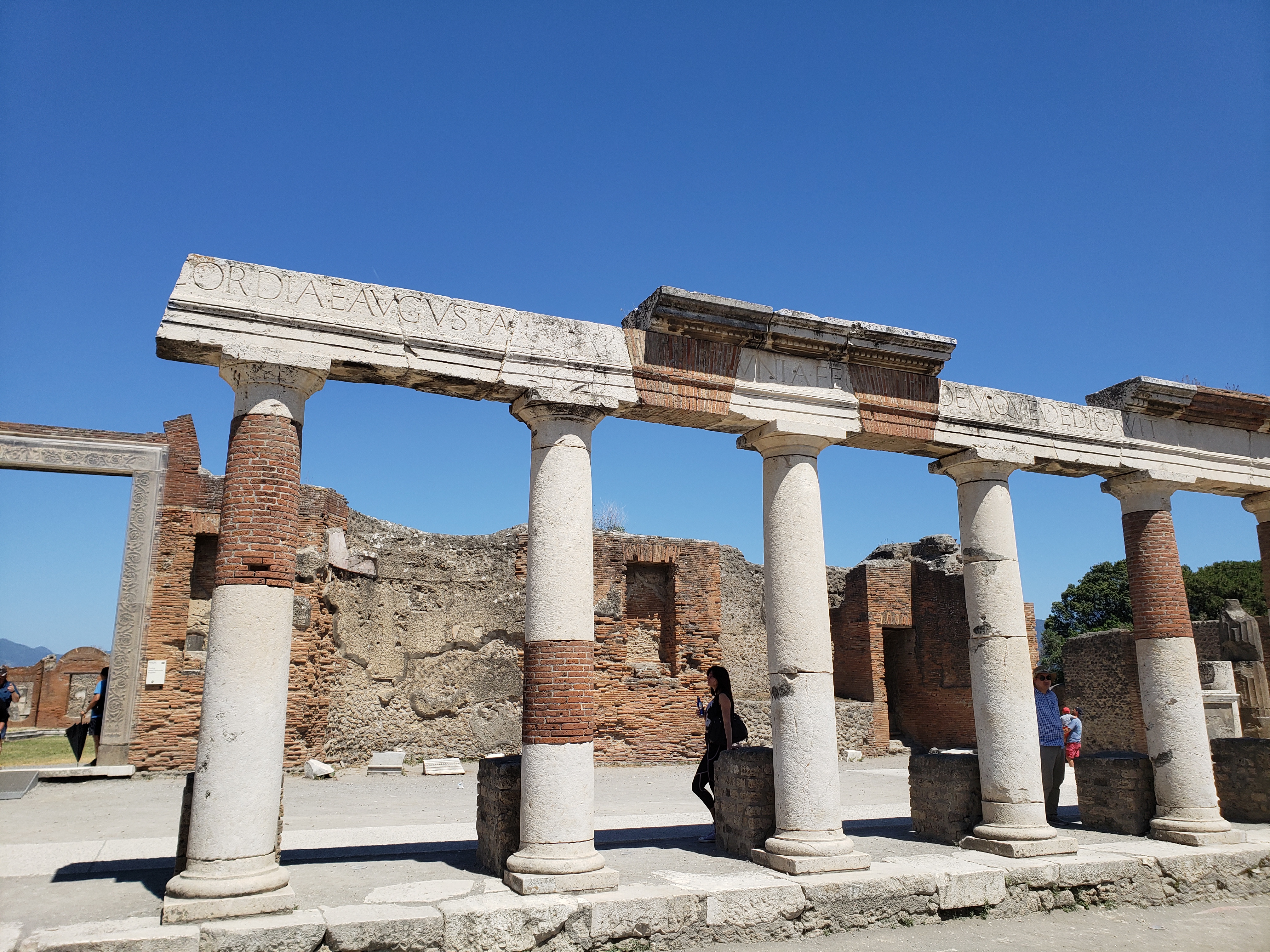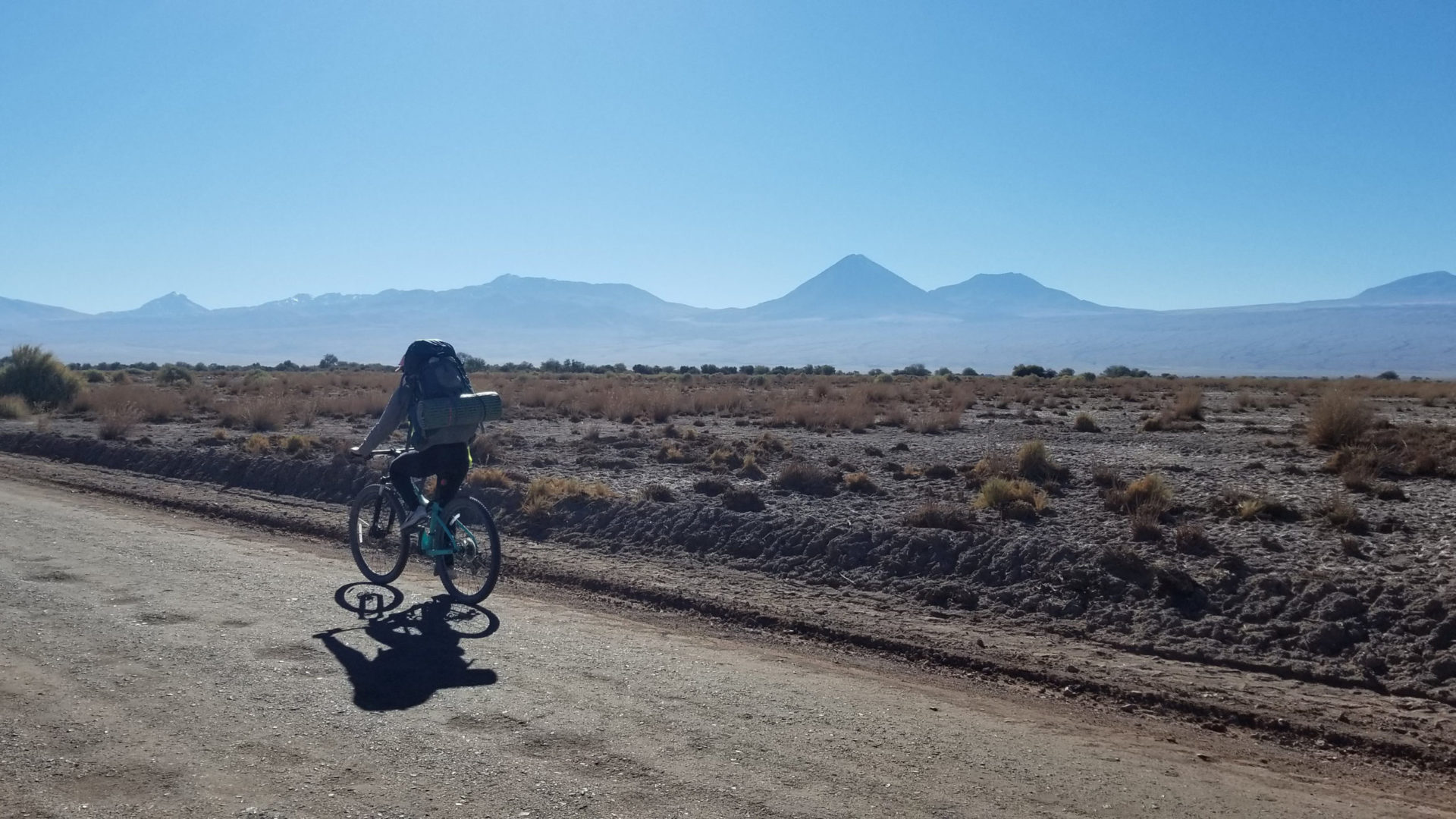ONE-MA3: Atlantis and Gotham in One Roman City

By Marcin Hajduczek ’22
Standing in the middle of the city, I could barely open my eyes against the sun reflecting off of endless slabs of marble. The piazza I stood in was the size of a soccer field, its green turf replaced by polished white stone. Intricately carved columns lined the edges, stacked one on top of the other with a stone beam stretching from column to column above each layer; bold letters inscribed on the beam trumpeted the wealth of donors that had funded the elaborate masonry. In the piazza’s center stood an equestrian statue of a local hero, whose copper glaze had corroded to green and whose heroics were perhaps more folklore than history. It served as a role model for the senators and businessmen that would come every morning to work at the Curiaand bureaucratic offices just behind the columned promenade. At the front of the square stood a massive temple to the Capitoline Triad. More imposing than any surrounding building, its multiple floors of marble and gold decorations were topped with a statue of Jupiter. Juno and Minerva faithfully stood by his sides, their shadows creating thin strips of grey across the otherwise white piazza.

Or at least that’s what Pompeii’s Forum would have looked like before Vesuvius erupted in 79 AD, explained our personal tour guide and Professor at the University of Queensland Duncan Jones. Much of what was once a bustling city center was lost in the last two thousand years, with only fragments remaining to hint at its former grandeur. The stone ground of the square was still polished, but by the footsteps of tourists rather than Roman manual labor. Some of the columns lining the edge of the forum were still partly erect, but only in one spot was the dual-layered promenade still visible; even this had been evidently put back together from scattered pieces like an archeological Lego set, red bricks filling the spaces where marble was missing. The names of the forum’s patrons were eroded beyond recognition, and written in a dead language, no less. The ruins of the temple hugged the earth too tightly to cast any shadows across the piazza, with only the base of a few thick columns remaining. Pompeiians might have felt that their gods had failed to protect their home from devastating destruction, but even if the city had survived, Jupiter would probably have been toppled and replaced by a figure of Christ in the later Roman Empire. At first glance Pompeii seemed to be a door into a foreign civilization: one with a confusing language, with unrelatable deities, and with emperors who decided food rations and put on gladiatorial spectacles.

“It might look a little destroyed now,” Duncan conceded, “but it’s still the best example we have of Roman urban architecture and engineering. Use your imagination to fill in the blanks- it is the basis for our own western civilization after all.” His commentary forced me to think about how the parts of Roman culture that have transcended time might be more important than what has been left behind. Although smaller, Pompeii’s forum wasn’t all that different from Washington DC’s National Mall; America replaced the senatorial Curiawith the Capitol Building and the White House, but they still served similar legislative purposes and were even built in a neo-classical style imitating the ancients. With a temple to Lincoln on one end of the Mall and an obelisk commemorating Washington in the middle, America clearly has its own “gods” and heroes to look up to. The city of Pompeii met its demise under the rule of an emperor, but it was built in Rome’s earlier Republican era, whose values and governmental separation of power was a clear inspiration for America’s founding fathers.

As an average citizen, American politics seemed somehow distant and tucked far away on Capitol Hill; Pompeiians, no doubt, felt equally far removed from an emperor in Rome. More prevalent to the typical plebeian was his everyday life. In the early morning, they would go greet their wealthy sponsors in their mansions in the wealthy district surrounding the forum. These mansions, orDomus, had lavish doorways kept open to show off the frescoes and mosaics decorating the interior to passing-by pedestrians. It was no different than modern celebrities wearing Gucci suits and being chauffeured in a Rolls Royce to impress tabloid readers and one-up their peers. Pompeii’s poor didn’t benefit from the same luxuries. The city’s water system was made of lead pipes even though Vitruvius’ writing tells us that the Romans were aware of the health risks involved. Like modern corporations judging if it’s cheaper to recall a product or settle lawsuits over the death of customers, the Roman elite judged that using cheaper pipes was more valuable than the lives of those drinking the water. Perhaps that’s why Pompeiians choose to drink beer and wine instead. As today, bars offered the cheapest meals, brothels coaxed the drunkards, and fresco-painted campaign posters advertised politicians that wouldn’t fulfil their campaign promises. Pompeii had all the elements of a city slum just a few streets away from its dazzling forum, a stinging reminder of the inequity of wealth that most Romans- and Americans- could never overcome.
Although literature and movies had romanticized my perception of Greeks and Romans, standing in the forum helped me realize that the gleaming column promenade and the wealth of the senators was no more than a daydream for Pompeii’s ninety-nine percent. Many may have felt that their gods abandoned them in favor of the rich well before the first flake of volcanic ash touched the city, and it wasn’t hard to understand their complaints as a modern city-dweller. Despite their emperors and gladiators, were the Romans really all that different from us?


